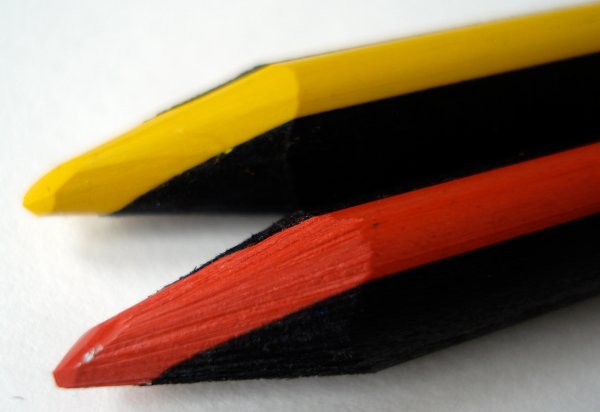
As well as the Staedtler WOPEX, the 2009 Paperworld show saw another innovative pencil announced – the Lyra Colorstripe.
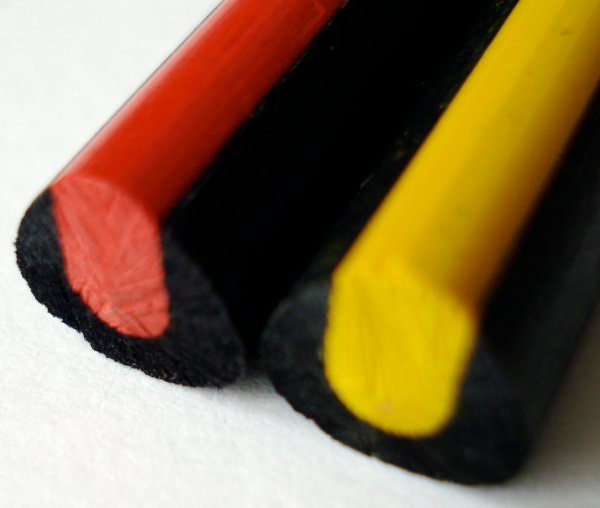
This slightly oversized triangular colour pencil has a rounded rectangular core exposed on one side! The “stripe” (coated to preserve the pencil and your hands) is visible along the length of the pencil.
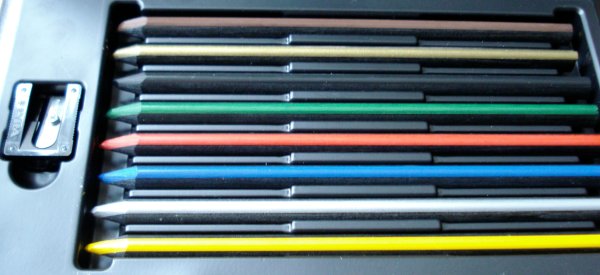
The Colorstripe’s designer, Formidable, has won several high level awards for the product.
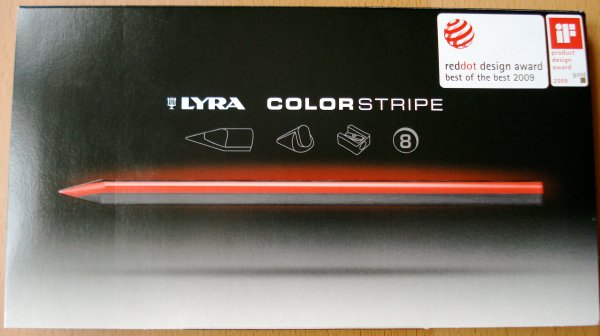
About one year after the announcement, the product seems to be available in sets of eight and sixteen, as well as singles, in Europe, North America, and Asia. I would like to thank Gunther from Lexikaliker for kindly sending me this set of eight.
The pencils are visually amazing. They are triangular, weighing about 6.8 to 8.5g depending on the core colour – quite a variation.
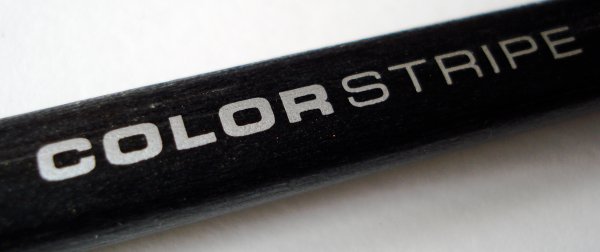
The black dyed wood is marked with silver lettering on one side with the bar code, EAN number, “Germany”, CE symbol, a model number depending on the pencil’s colour, and “COLORSTRIPE LYRA”. A bit busy, but I think the silver looks very nice on the black wood.

On Strathmore Bristol 300 Series 260g/m2 vellum, the tones seems quite satisfying.
With black-dyed wood, a triangular shape, and having a cross section around 8mm, I was wondering about sharpening. Fortunately, Lyra provided a sharpener meant for this diameter. Thanks to an informative post at Bleistift, I recognize the “E” with crown symbol on the sharpener, indicating an Eisen product.
There were no problems, and the pencil sharpened easily.
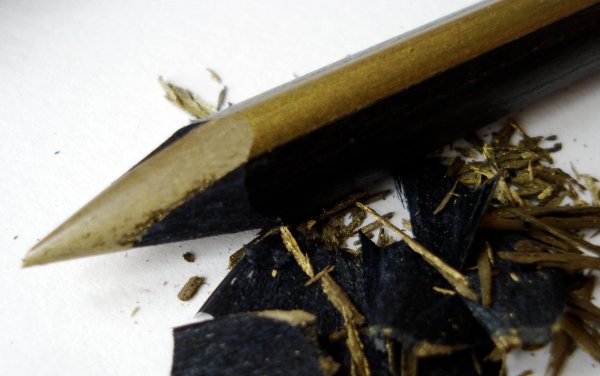
Well, there was one problem. When I started to use the pencil, it seems the lead core had been dislodged and unattached itself from the pencil. This is with the gold pencil. I haven’t had any issues with the other colours.
Has anyone out there had this problem? I hope the issue was just with this individual pencil.
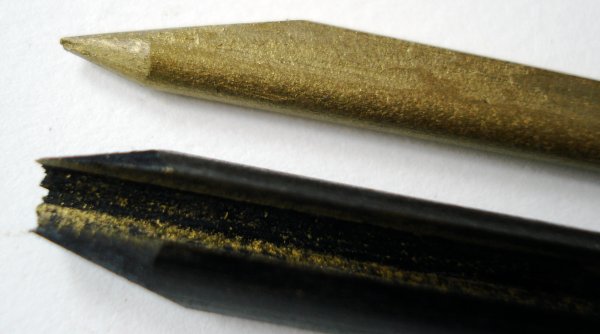
See also: Lyra Colorstripe

Looks like an interesting colored pencil concept, and Blick’s already have them in stock so I might give them a try soon. Wonder if those sleeks leads are wax or oil based. Too bad about the gold pencil. Were you able to re-attach the lead or exchange it?
I somehow expected the core to behave like that, when I first saw this design – it takes some good bonding agent to beat the old “weight lever principle” – if you turn the stripe downwards and lean on the pencil, this has to happen sometime. Good thing it was only one.
They look nice and the colours seem to be bright. Indeed a nice and groundbreaking design, but maybe a little less functional than it was intended?
Regards
Henrik
It’s not groundbreaking at all really, if anything it’s a way of cost reducing the traditional method of making a pencil. The pencil requires only one slat of dyed wood, the core is bonded in place and then machined to shape and size. You don’t have to paint the pencil body, just lacquer them all together. Mechanically this is a weak design and I would have expected the core to come out. I’m sure as the length of the pencil reduces the propensity for the core to come out will increase. More torsional flexing due to sharpening and a decreasing surface area of bond agent with the same applied writing/drawing force. I bet they cost a lot more than a regular pencil too.
Good points regarding the mechanical weakness and limited functionality of this design. Perhaps in order to keep the Colorstripe’s long-term viability in the market, they will really need to design a specialized holder/extender to keep the lead in place as the pencil length shortens after each sharpening. Hmm given the last two comments, I’m going to hold off trying them for now.
Thank you for the thought provoking comments. I’m curious about actual experiences others have had, as despite these arguments, Lyra must surely have satisfied themselves about this unusual manufacturing method and done considerable testing.
Hmmm. I’m not sure that the lever arm argument is the whole story. While I agree that a casing that completely surrounds the lead is stronger, in this case the cantilever (the pointed portion sticking out) is quite short and tapered. My intuition is that a reasonable glue should hold it. It could be that the binder and the glue were not optimized. The metal colors may also be a special case. The metal flakes used as pigment probably have a coating that prevents oxidation and that could enhance release from the adhesive. It will be interesting to see if other colors pop out.
The comments on these being less expensive to manufacture are probably correct but that’s a good thing. Greater utility and (eventual) lower cost help everyone.
Just a reminder, the Carnival of Pen, Pencil and Paper needs your submissions! The carnival homepage is at http://www.notebookstories.com/carnival-of-pen-and-paper/ if you want more info and you can find the submission page is at http://blogcarnival.com/bc/submit_7671.html!
Submit your entries by 5pm on February 7th, as the next Carnival will be posted at http://www.schoolsupplydance.blogspot.com February 9th!
We always admire the beauty..
And so is here..
Those pencils are excellent combination of ‘Man-Machine & Material’!!
Can someone suggest me how those pencils are manufactured??
This ‘Black Beauty’ reminds me of my ‘hand made’ Pencil of my early days as student..
In a School Project, I submitted a Hand made Pencil, where the ‘Hand made’ Lead was fixed from the one side of the pencil!
Beauty is always to be admire, to be touched and to be felt!!
Great example of craftmanship!!
I love ‘LYRA Black Beauty’ with Colourful Heart!!